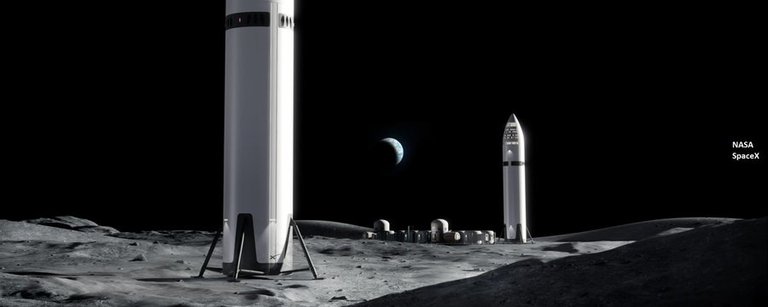Sometimes something is so logical and so obvious that it needs to be said and done without reservation.
Planning dedicated SpaceX Human Landing System (HLS) Starship missions to the Moon is such a case.
Even if NASA's Artemis mission continues and uses HLS, there are just too many reasons to plan dedicated HLS Moon missions regardless.
This series looks at how an HLS Moon mission could be used to get boots and the Moon sooner, and begin colonization now rather than sometime in the future.
Basic HLS Moon Mission Profile
One possible mission profile could be to use two SpaceX HLS Starships and Crew Dragon.
The basic mission profile is this:
- Launch two HLS Starships
- Refuel both Starships in Low Earth Orbit (LEO)
- Send crew to LEO in Crew Dragon
- Moon landing crew board a HLS Starship in LEO (HLS1)
- Orbital crew board the other HLS Starship in LEO (HLS2)
- HLS2 Starship will travel to Moon to orbit without landing to act as an orbital station, backup and return vehicle
- HLS1 Starship will fly to the moon, land, then relaunch to moon orbit
- Crew transfer to HLS2 and return to LEO
- In LEO crew transfer to Crew Dragon and return to Earth
This should all be doable by the end 2026 if Starship production rates can be maintained and in-orbit refueling is successful.
It's Possible
It is possible to do the entire mission with only one HLS Starship as a Block 3 Starship fully fueled in LEO should be able to fly to the Moon, land, relaunch to moon orbit and then return to LEO.
Since the exact capabilities of the Block 3 Starship have not been confirmed, and to ensure safety and redundancy, two ships are included.
After this mission there will be one Starship in orbit around the moon capable of doing another 2 - 3 landings or acting as the orbital station for the next mission.
There will also be one HLS Starship in LEO ready to return to the Moon once refueled.
Sending two Starships sets up an environment for extended mission profiles. This means the next mission is ready very quickly and very cheaply.
Why not plan for it?
Next . . .
Part 2 of the series looks at the benefit of a HLS only Moon mission profile.
